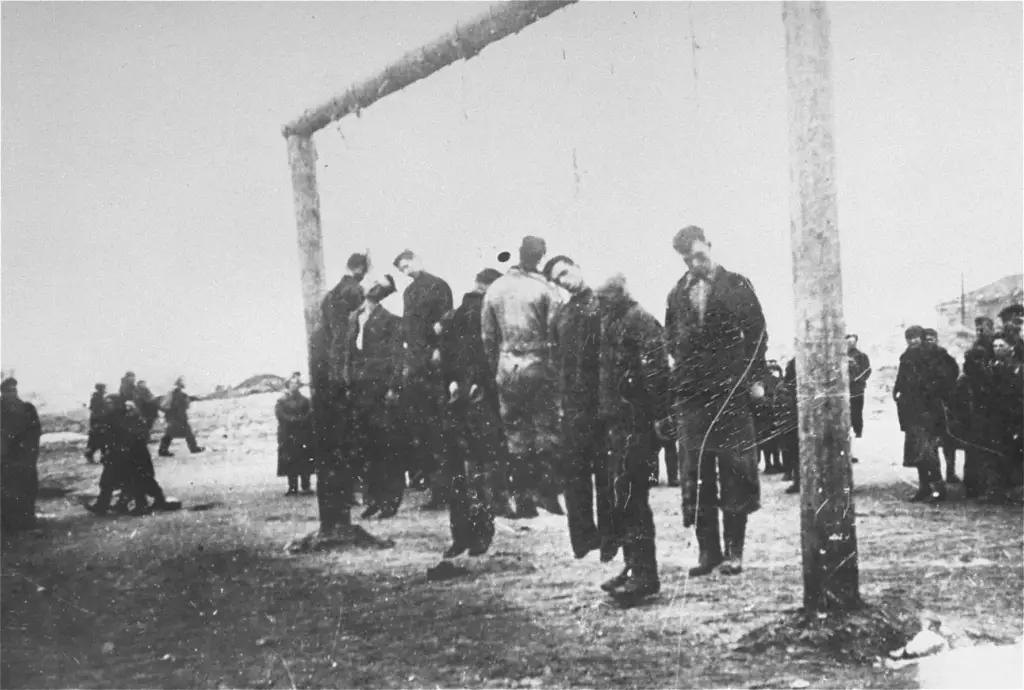The Heartbreaking Sacrifices of Lvov Ghetto Judenrat in the Holocaust
During the Holocaust, Jewish leaders in ghettos and concentration camps faced impossible choices. They were forced to navigate a treacherous path between collaboration with their oppressors and resistance against the Nazi regime. The members of the Lvov Ghetto Judenrat in Lvov, Ukraine were no exception. Despite their efforts to save the lives of their fellow Jews, they were eventually caught by the Gestapo and executed. Their courage and sacrifice are a testament to the human spirit and a reminder of the importance of standing up against injustice and oppression.

The Lvov ghetto also included some houses. Lvov is a city in Ukraine about 250 miles southeast of Warsaw, Poland.
The Lvov Ghetto and the Judenrat
In 1941, the Nazis occupied Lvov (also known as Lwow or Lviv) and created a ghetto where they forced thousands of Jews to live in overcrowded and unsanitary conditions. In the ghetto, the Jewish council, or Judenrat, was responsible for enforcing Nazi orders and allocating resources to the Jewish community. The Judenrat was a controversial institution, with some members seeing it as a way to help their community survive, while others saw it as a tool of the oppressors.

The members of the Lvov Ghetto Judenrat faced a difficult challenge. They had to balance the need to comply with Nazi orders to try to save as many lives as possible, with the desire to resist the oppressors. They knew that any act of resistance could result in immediate and brutal retaliation against the Jewish community.

Efforts to Save Lives
Despite the challenges they faced, the members of the Lvov Ghetto Judenrat worked tirelessly to try to save the lives of their fellow Jews. They created a system of false identities and documents, allowing Jews to escape the ghetto and find safety outside of Lvov. They also set up a network of safe houses and smuggling routes to help Jews escape the ghetto undetected.
In addition to their efforts to help Jews escape, the Judenrat also worked to improve conditions inside the ghetto. They set up soup kitchens and hospitals and tried to ensure that everyone had access to food and medical care. They also fought against the Nazis’ efforts to deport Jews to concentration camps, sometimes through bribery and sometimes through force.
The Gestapo Catches Up
Despite their efforts, the members of the Lvov Ghetto Judenrat were eventually caught by the Gestapo. They were accused of collaborating with the Nazis and were put on trial. Nine members of the Judenrat, including the chairman Ephraim Barasz, were sentenced to death by hanging.
The execution was carried out on July 25, 1944, in public in the Lvov Ghetto. Thousands of Jews were forced to attend as a warning to others who might consider collaborating with the Nazis. The condemned men walked to the gallows with dignity and courage, refusing to betray their fellow Jews or allow the Nazis to break their spirit.

Legacy and Commemoration
Despite the terrible consequences they faced, the members of the Lvov Ghetto Judenrat did what they believed was right. They worked tirelessly to protect their fellow Jews and to provide whatever aid they could in the face of unimaginable horrors. Their bravery and selflessness are an inspiration to all of us, and a powerful reminder of the importance of never giving up in the face of adversity.
Today, the legacy of the Lvov Ghetto Judenrat lives on. They are remembered in memorials and museums throughout the world, and their story serves as a powerful reminder of the importance of standing up against injustice and oppression. The courage and sacrifice of the members of the Lvov Ghetto Judenrat will never be forgotten, and their memory will continue to inspire future generations to fight for justice and equality.

Pingback: The Truth About the Nazi Atrocities in Liepaja Shocking Pics
This section needs correction, since the Gestapo were Nazis:
The Gestapo Catches Up
Despite their efforts, the members of the Lvov Ghetto Judenrat were eventually caught by the Gestapo. They were accused of collaborating with the Nazis and were put on trial. Nine members of the Judenrat, including the chairman Ephraim Barasz, were sentenced to death by hanging.
The execution was carried out on July 25, 1944, in public in the Lvov Ghetto. Thousands of Jews were forced to attend as a warning to others who might consider collaborating with the Nazis. The condemned men walked to the gallows with dignity and courage, refusing to betray their fellow Jews or allow the Nazis to break their spirit.